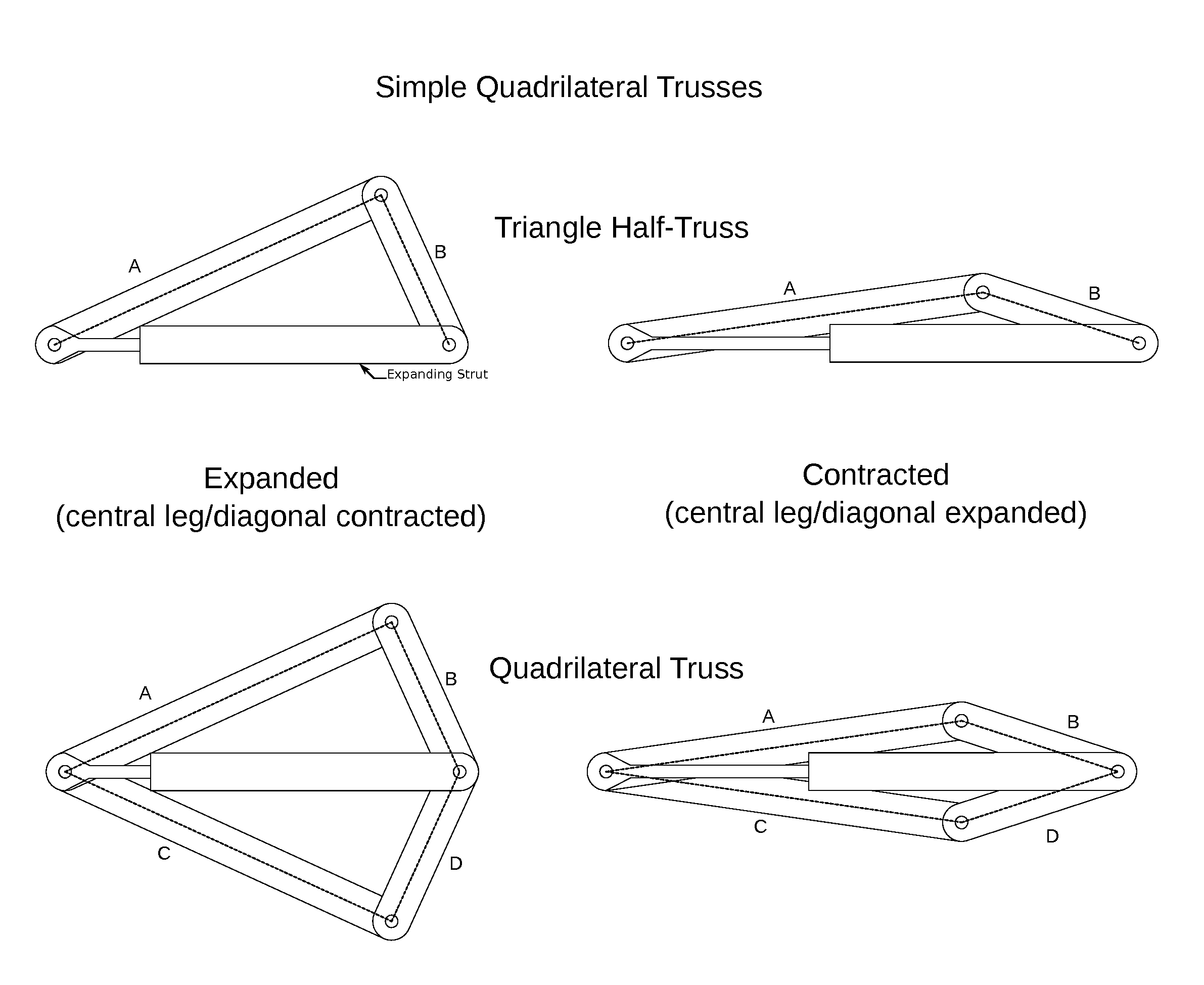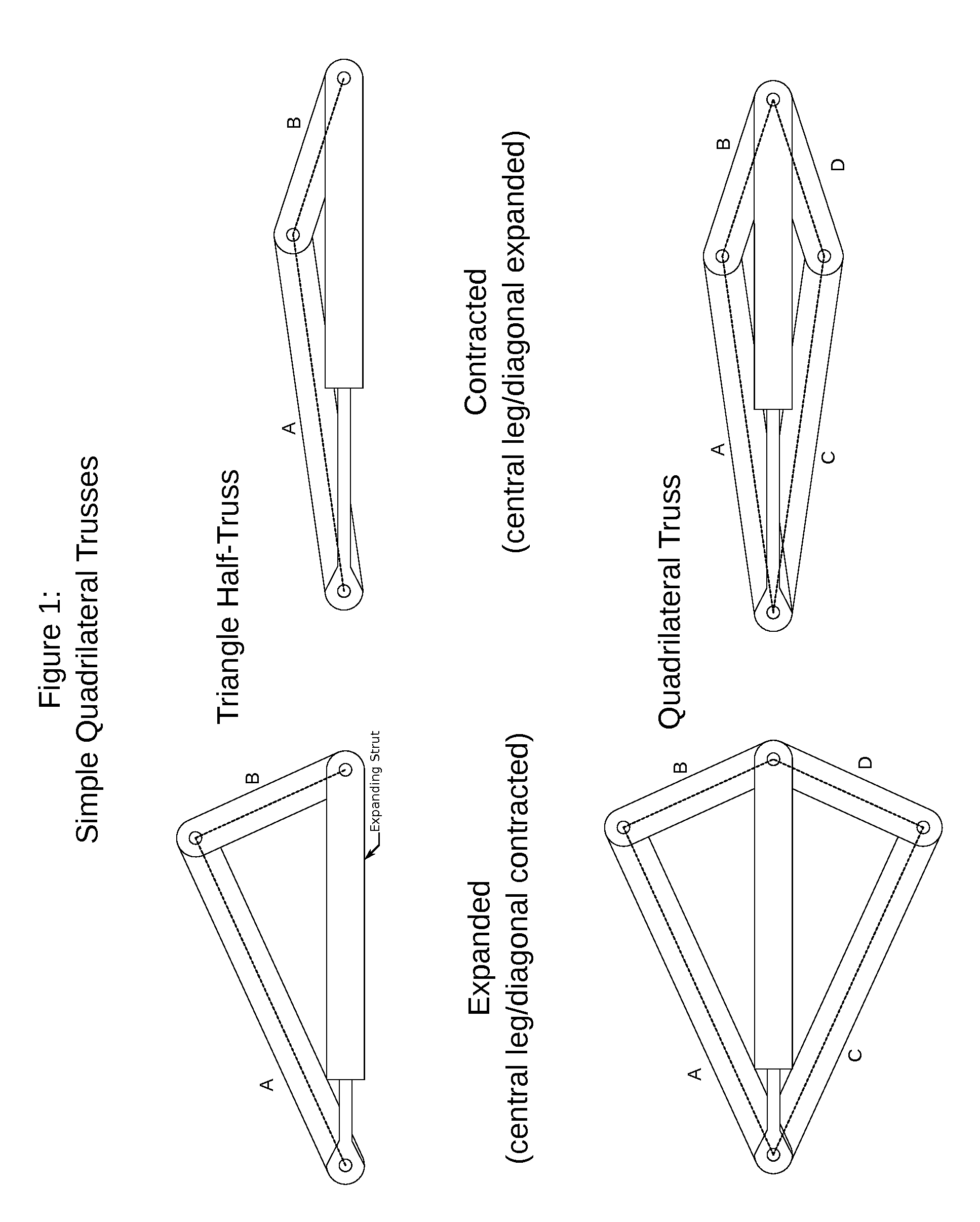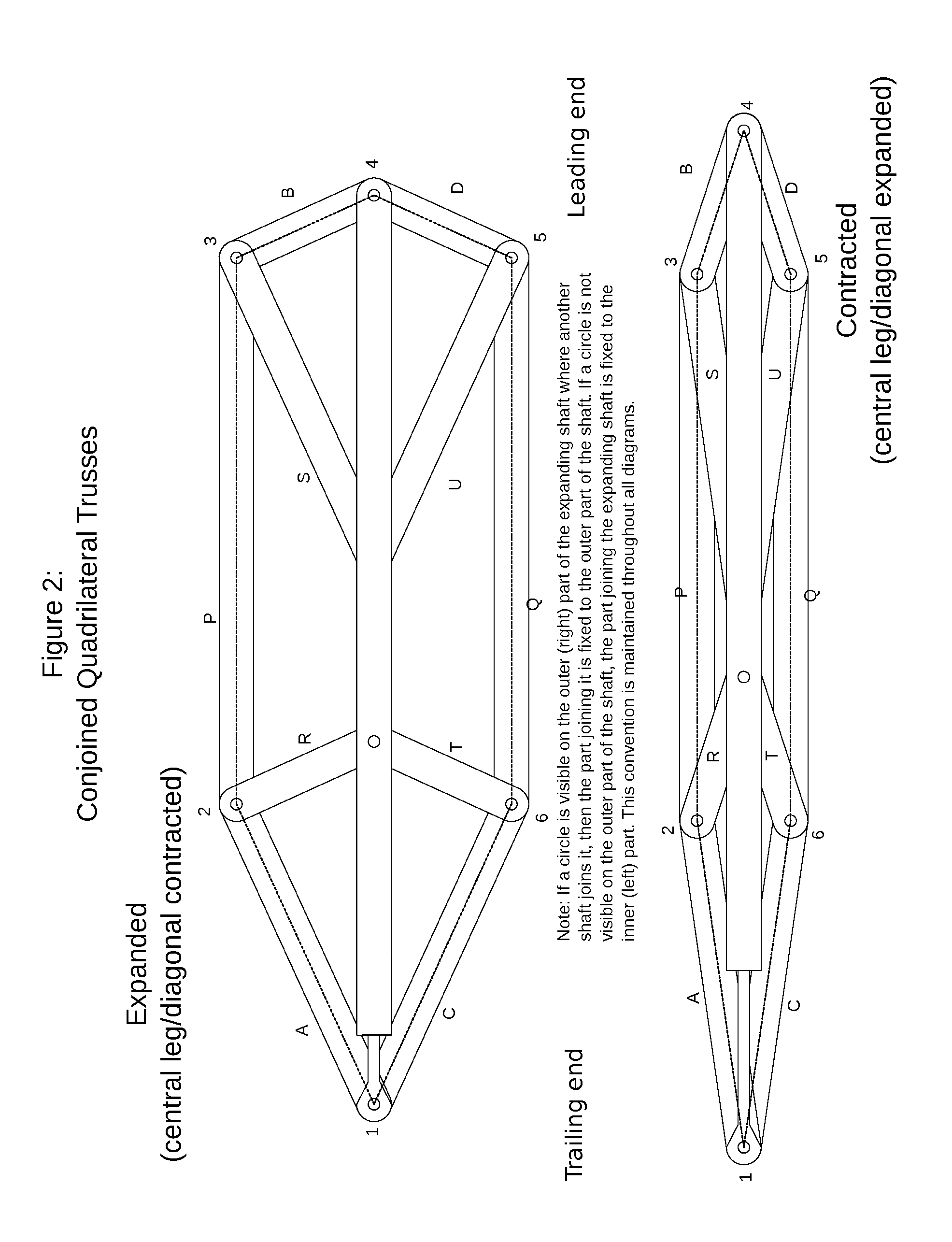Aerodynamic Variable Cross-Section Airfoil and Constant Lateral Surface Area Truss
a technology of airfoil and constant lateral surface area, which is applied in the direction of machine/engine, vessel construction, transportation and packaging, etc., can solve the problems of not being aerodynamically efficient and severely impairing performance, and achieve the effect of less complexity and better emulation
- Summary
- Abstract
- Description
- Claims
- Application Information
AI Technical Summary
Benefits of technology
Problems solved by technology
Method used
Image
Examples
Embodiment Construction
[0036]Fixing each truss to expand by the same amount as the others may be accomplished as simply as having a single rod join the leading edges of the trusses and another rod joining the trailing edges of the trusses in every shared expandable strut present. The airfoil may also have a curved leading or trailing edge, but note that it is necessary for the enclosing material to have some elasticity to conform to the frame in this case. The rods joining the leading rails need only be curved to achieve this.
[0037]Since it is preferable to have the sheet of material around the airfoil frame wrinkle and fold as little as possible, it is best to construct the truss with the majority of the structure within the perimeter of the truss. Therefore the individual segments of each half truss may be constructed with a bent shape to ensure that the main body of the segment lies within the perimeter of the truss as in FIG. 7. This way, most of the enclosing sheet material may lie along the perimete...
PUM
 Login to View More
Login to View More Abstract
Description
Claims
Application Information
 Login to View More
Login to View More - R&D
- Intellectual Property
- Life Sciences
- Materials
- Tech Scout
- Unparalleled Data Quality
- Higher Quality Content
- 60% Fewer Hallucinations
Browse by: Latest US Patents, China's latest patents, Technical Efficacy Thesaurus, Application Domain, Technology Topic, Popular Technical Reports.
© 2025 PatSnap. All rights reserved.Legal|Privacy policy|Modern Slavery Act Transparency Statement|Sitemap|About US| Contact US: help@patsnap.com



